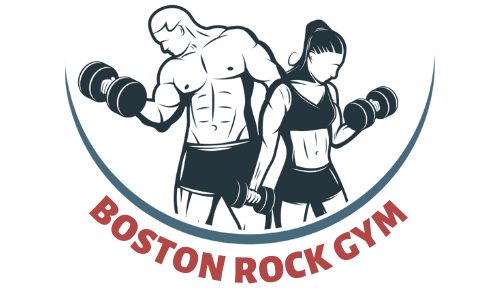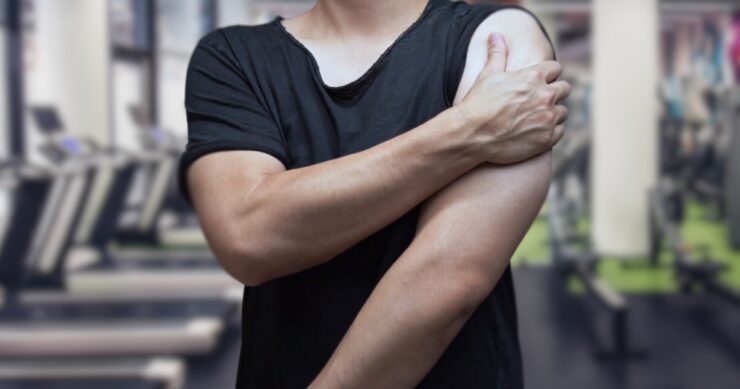Bodybuilding and living an active life often mean sore muscles, which is a normal side effect of working out.
The ache after a workout is common for everyone, whether you’re a seasoned athlete or someone who is just starting to work out regularly.
Sore muscles, also called delayed onset muscle soreness (DOMS), happen when we do intense or new physical activity that damages muscle fibers on a microscopic level.
Even though this pain is a normal part of building muscle, people who want to get back to their fitness routine quickly need to find effective ways to speed up the recovery process. And light therapy can also be an effective method!
Contents
Understanding Muscle Pain: An Overview
Before talking about ways to recover faster, it’s important to understand how muscle soreness works scientifically.
Muscle fibers get microscopic damage when we do physical activities that our muscles aren’t used to or when we work out harder than usual. This damage sets off an inflammatory response that makes the body hurt, stiffen, and swell.
The worst DOMS symptoms usually happen 24 to 72 hours after exercise. Muscle strength and range of motion can also get worse at this time.
Even though this is a normal way for the body to respond to physical stress, the pain of sore muscles can make people not want to work out regularly.
So, finding ways to ease this pain and speed up the healing process is important for keeping up a fun and healthy fitness journey.
How Proper Hydration and Diet Can Aid to Recover Muscle Soreness?
Getting enough water and food is the first step to a full recovery. Every cell in our bodies needs water to work, including the cells that help keep muscles healthy and repair themselves. Staying hydrated helps the body get rid of metabolic waste, which lowers inflammation and speeds up recovery overall.
Along with staying hydrated, good nutrition is very important for muscle recovery. You can get all the nutrients your muscles need to grow and repair themselves by eating a balanced diet with the right amount of protein, carbs, and healthy fats.
Protein, in particular, is very important for fixing muscle fibers that have been damaged. Meats that are low in fat, dairy, eggs, and plant-based sources that are high in protein can help you get better faster.
Sufficient Rest and Sleep Can Work Magic
Rest days are not just a break from hard workouts; they are an important part of any fitness plan that works. Giving your muscles the time they need to heal and grow back is important to avoid getting too tired or overtraining.
Getting good sleep is also very important for recovery. The body releases growth hormones during the deep stages of sleep. This hormone is very important for repairing tissues and building muscle. Aim for 7 to 9 hours of good sleep each night to help your body’s natural healing processes work at their best.
Consistent Red Light Therapy Also Does the Trick
People often think that the only way to treat muscle pain is to just rest, but using certain recovery treatments like red light therapy can also help. Click here to learn more about how red lights help.
It has been reported that red light therapy can aid in improving blood flow to the muscles. This makes it easier for metabolic waste to be removed, which speeds up the process.
To speed up the recovery process, stretching and flexibility exercises are also very helpful. Doing dynamic stretches before a workout and static stretches afterward can help you become more flexible, loosen up your muscles, and feel less sore.
This is because they focus on controlled movements and stretching, yoga and Pilates are great ways to get more flexible and help your body heal.
How Massage and Foam Rolling Can Help You Feel Better
A good massage therapist knows how to work on specific muscle groups, kneading and moving tissues to ease tension and improve blood flow. Professional massages can help, but you can also help yourself by massaging yourself with tools like foam rollers.
Self-myofascial release, or foam rolling, is when you use a foam roller to put pressure on certain points in your body. This method helps loosen up tight muscles by breaking up adhesions and knots.
This improves blood flow and makes muscles feel less tight. Including foam rolling in your routine after a workout can help your muscles recover faster and keep them from getting stiff.
Secondary Benefits of Sore Muscle Recovery
While the primary focus of recovering from muscle soreness is to return to peak physical condition swiftly, this process also yields several secondary benefits that contribute to overall health and well-being.
- Improved Cardiovascular Health: One of the biggest benefits of following a comprehensive muscle recovery plan is improved blood flow and heart health. The combination of proper hydration, nutrition, and active recovery practices like stretching and foam rolling can enhance circulation, which is crucial for cardiovascular health. This improved circulation can lead to a reduction in Exercise-Induced ECG Abnormalities, a phenomenon often observed in athletes.
- Enhanced Mental Health: Regular exercise and proper recovery have been linked to improved mental health. Discipline and commitment to a recovery routine can reduce stress and anxiety, leading to a more balanced mood and outlook.
- Better Sleep Quality: Adhering to a recovery plan, especially one that includes sufficient rest and good sleep hygiene, can significantly improve sleep quality. Better sleep not only aids in muscle repair but also contributes to overall health, including cognitive function and emotional well-being.
- Increased Longevity in Athletic Performance: Consistent and proper muscle recovery techniques ensure that athletes can maintain their physical activities for longer durations over their lifetime. This longevity is critical for career athletes and those who wish to stay active as they age.
- Prevention of Chronic Injuries: By focusing on muscle recovery, individuals can prevent the development of chronic injuries, which often result from overuse and inadequate rest. This preventive approach is essential for sustaining a healthy and active lifestyle.
Incorporating these secondary benefits into your recovery regimen not only aids in faster muscle recovery but also contributes to a more holistic approach to health and fitness. Understanding the broader impacts of these practices, including on heart health, can motivate individuals to adopt a more comprehensive view of their health.
Bottom Line
A multifaceted approach that includes staying hydrated, eating well, resting, active recovery, and targeted therapies can help you get over muscle pain faster. Knowing the insights behind muscle soreness and using a complete recovery plan can help ease your pain, improve your performance, and lower your risk of getting hurt.
Using these recovery techniques can help you turn muscle soreness from a problem that stops you from becoming fit into a manageable and short-term part of your goal to live a healthier, more active life.



